So you’re looking to fit out your bar or pub. Well, that’s exciting! We understand that while this task can be exciting, it can also be overwhelming. You may be worried about how much the exercise will cost you and so that’s why we’re here.
We’ve pulled together a rough guide for the costings of bar furniture across the industry and what you can expect to drive the cost of your furniture up and what will keep the costs down.
There are many reasons for the differing prices across the industry in the bar furniture options that are presented. Here we list out the reasons why. Read on below to find out more about the cost of bar furniture.
How much do Bar Tables Cost?
There is great pricing difference across the industry, and there are multiple reasons for this. It could be the materials used, or the place of manufacture – or even the style.
So how does material affect the cost of my bar tables?
Whether a bar table is made from timber or from a laminate, will greatly affect the price that you pay.
Timber bar tables can be made from a variety of timbers – from Australian hardwoods, through to Asian timbers. Tables made form Australian hardwoods would be the priciest of the timber range, as they are created from limited Australian resources and the labour costs to create the table are far higher than those of Asian origin. Alternatively, imported Indonesian and Indian timbers will cost less than the locally manufactured bar tables, and still be of great quality. Whilst many Asian timbers are often cheaper, they aren’t as hardy and don’t withstand the extreme weather of Australia.
This goes for both entire timber bar tables and timber table tops. However, a more cost-effective way to achieve the timber look would be to go with a separate timber table top on a bar table base. However, the biggest downfall with this idea, is that these tables are limited in their sizing and the number of patrons that they can fit.
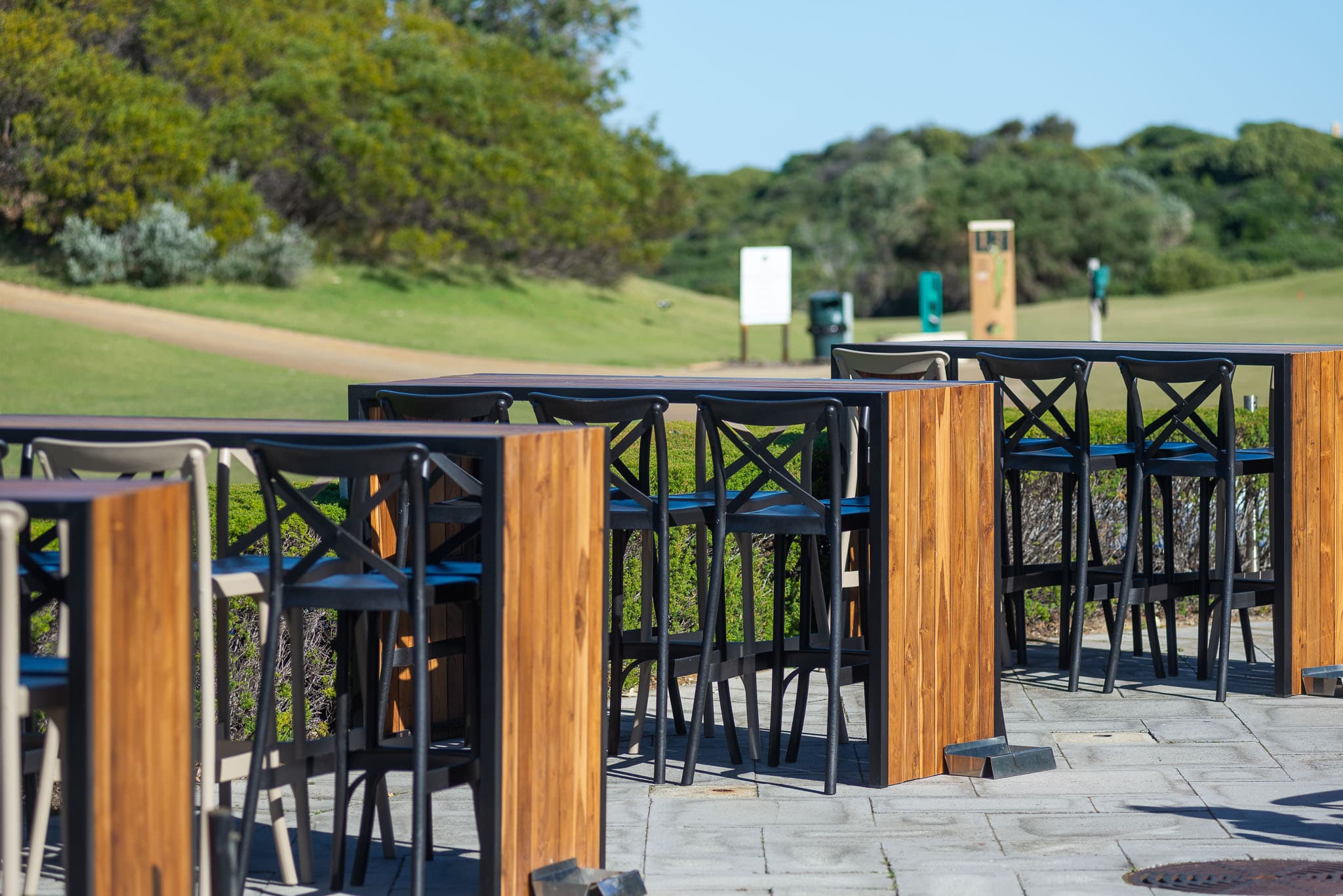
A different option that wouldn’t be as costly, would be to use a laminate top, rather than a timber table top. Laminate can be either compact laminate or pre-laminated. The more cost-effective version would be the pre-laminated tops, which come in a wide range of colours and offer more value for money. However, these tops can’t be used outside, whereas compact laminate can. Compact laminate table tops are incredibly hardy, thinner, and weather-proof, meaning they can ask a higher price than their pre-laminated counterparts.
Alternative to both timber and laminate, would be resin tables tops. Here at Adāge we call these Gentas tops, but you may have heard of them as Isotops or SM France table tops. Resin table tops are strong tops that offer beautiful finishes and ask a reasonable price. They aren’t created from solid, natural materials, such as timber, and the process to create the top is much simpler than it is to create a laminate table top. This often means moulded resin table tops are the most economical table top available in the commercial furniture market.
However, it isn’t only the material of the top of the bar table that will affect the cost of the table. The materials that are used in the base will also affect the price. Standard steel, aluminium, cast iron and stainless steel are all used to create bases.
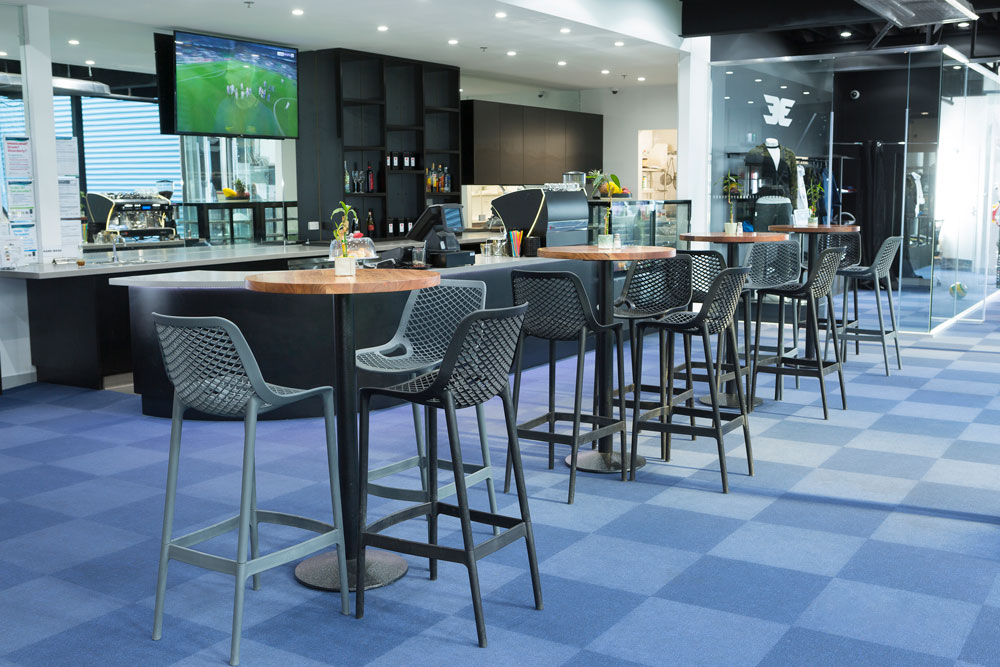
Standard steel is in abundance and therefore tends to be the most inexpensive material used for table bases. Cast iron bases are more costly than standard steel as they require moulds for each base, and therefore more work goes into each base. Stainless steel is the most expensive material used for table bases, due to the additives that are used to make the product corrosion resistive.
With any steel products, there are also additional options, such as powder coating or galvanizing that drive the cost of the item up. These additives make the item useable outdoors, but it does add to the cost that you will pay.
Now we’ve discussed materials, let’s discuss size.
How does size affect the cost of my bar tables?
As bar tables are such big items, the size that you decide to run with can also affect the price that you will pay. This may sound obvious, but the bigger the table, the more the table will cost. Bigger tables require more materials to create them, and therefore the cost increases. However, it isn’t only materials that mean that bigger tables are more costly.
Bar tables are bulky items to freight and therefore the bigger the table, the more it will cost to freight from the warehouse to your venue.
Any fixed footrails on the bar table will also mean that they will cost more to freight as they are harder to transport. If the footrails aren’t fixed to the table and can be bolted on after delivery, that will lessen the cost of freight.
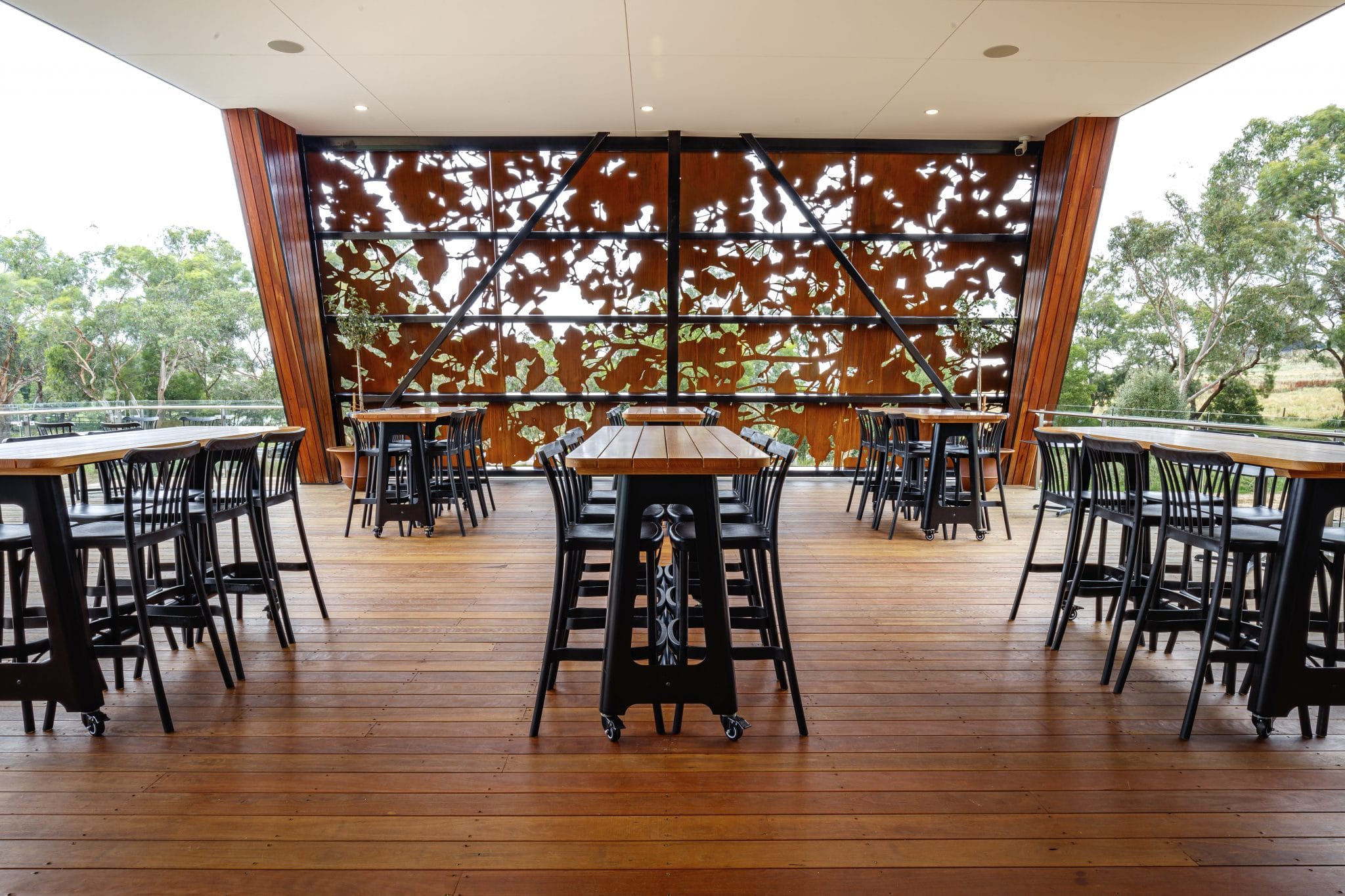
Whether your bar table is assembled or flat packed will also affect the cost of the delivery. Flat packed bar tables will cost less than an assembled bar table to freight, however it does mean there is the added bother of assembling your bar tables at your venue when they arrive.
An option to get around this would be to choose a table top and table base, rather than a full bar table. A base and top might not give you the size you need, but it would cost less in shipping.
Whilst the size of your table affects the cost, the style that you are going for will affect the price as well.
Tell me, how does style affect the cost of my bar tables?
Bar tables vary in styles, and this doesn’t often mean a variance in price. However, there are small features that would cause a variance.
For example, if the bar table has slab ends rather than legs, it will be more costly. Slab ends look great; however, they do mean that it is difficult to seat someone on the end of the table.
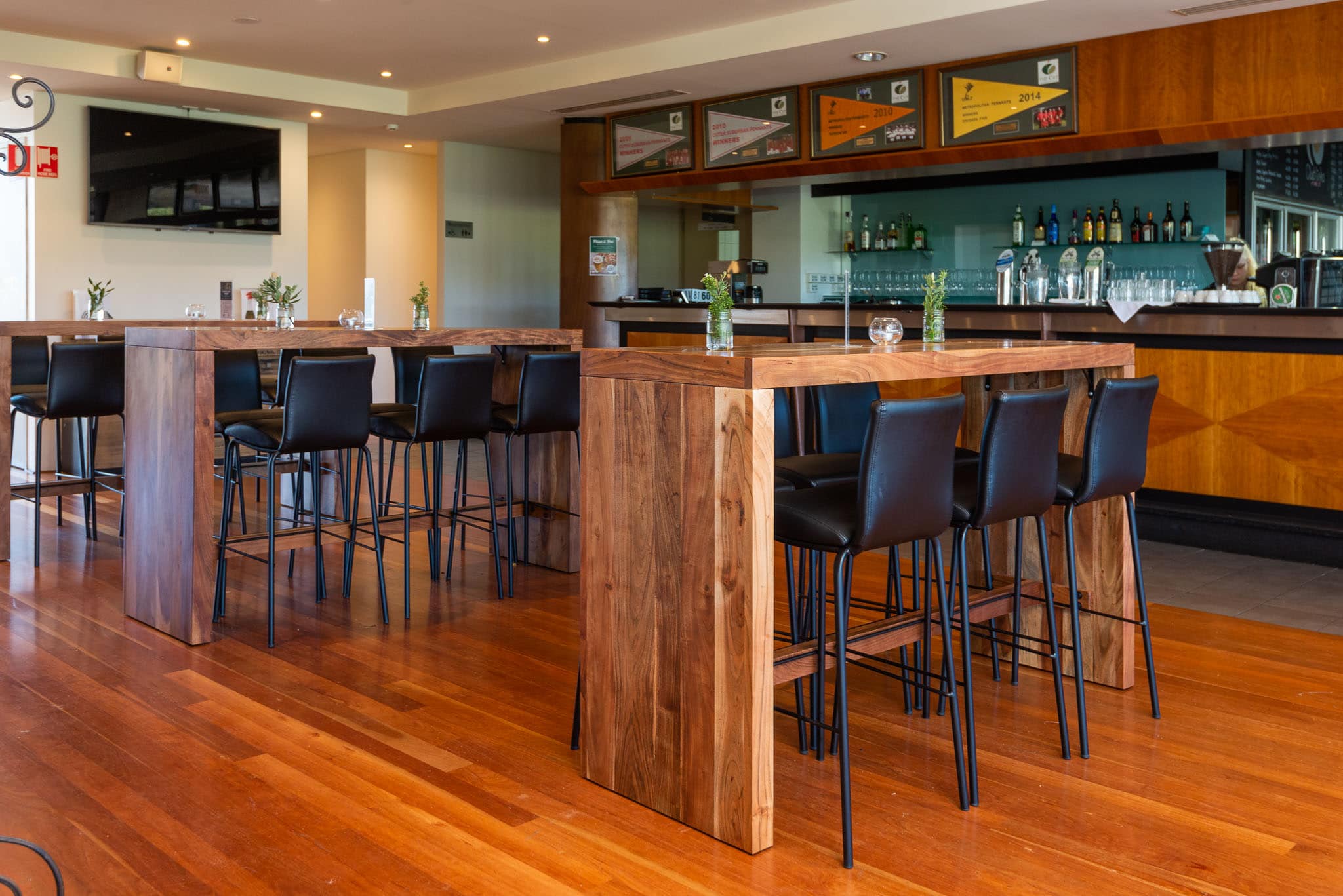
Some bar tables may offer wheels on the feet of the table to enable easy manoeuvring around the venue. Wheels do add to the cost and can cause the tables to be above the height of a normal commercial bar table.
Now we’ve talked about bar tables, so let’s discuss bar stools.
How much do Bar Stools Cost?
There are many things that affect the cost of bar stools across the industry, so let’s fill you in!
Material again – how does it affect the cost of my bar stools?
When you set about choosing your new bar stools, the materials that the bar stools are made from greatly affect the price you’ll pay. Choosing from the timber or upholstered range will increase the price you pay, while choosing from the polypropylene range will lead you more towards the lower end of the scale. Metal stools will meet you somewhere in the middle.
Timber bar stools in themselves are not all the same price bracket. Depending on the timber that is used, timber stools can vary greatly in pricing. European Beech is the preferred hardwood that is strong, inexpensive and has been used for furniture since the 1800s. European Beech timber is a slow growing tree with a short grain – making it strong and stable, and therefore ideal for furniture. More inexpensive timber chairs will often be made from Rubberwood or Chinese Oak, which is fast growing but not as strong. These timbers are easier to produce, which brings the price of the chair down.
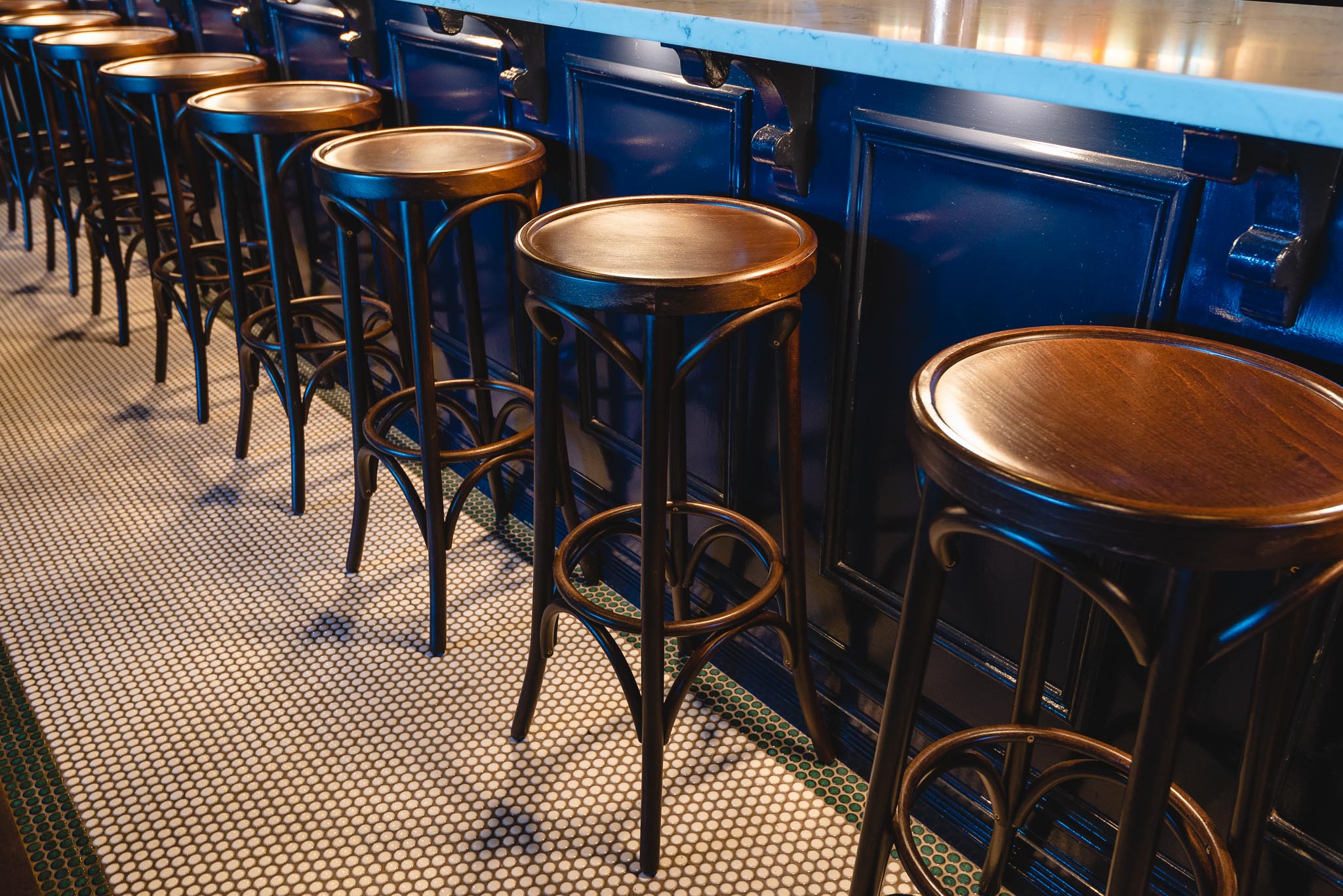
Upholstered bar stools are bound to turn heads and bring in the classic comfort of soft upholstery. However, they are also more towards the higher end of the scale of pricing. The reason for this lies in the materials used. While some frames are made from steel, others are made from timber. In the instances that timber is used as a frame for a bar stool, the pricing tends to increase, due to the raw material costing more. On a similar line, the material that is used to upholster the seat of the stool will also affect the price you pay. The more popular bar stools that are rolled off a factory line tend towards the lower end of the scale, while bar stools crafted individually tend to hitch the price up.
Polypropylene bar stools vary in price depending on the design and style. Polypropylene stools are injection moulded; therefore, the more complex designs require more complex moulds, which adds to the price. Different countries have different levels of standards and therefore chairs that originate from countries with lower standards will be cheaper due to the lesser costs with manpower and the quality of the moulds and polypropylene used.
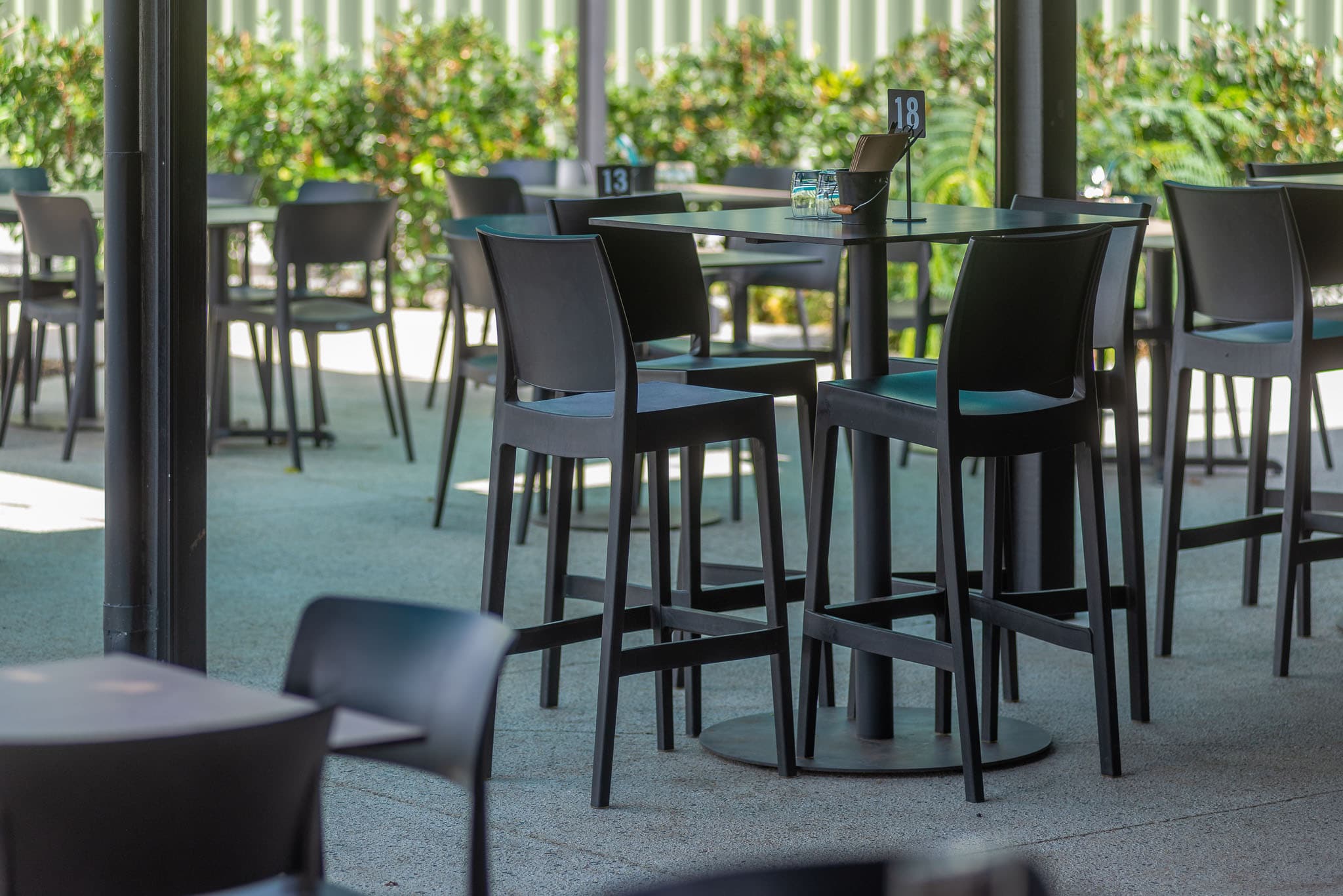
The term Metal loosely defines bar stools made entirely of any metal material. These stools can be made from mild steel, aluminium, brass and sometimes, although rarely, from stainless steel. As with almost any product, the more details in the design, the more the design will cost. Finishes such as chroming, galvanising and powder coating all add to the price of the stool.
Once you’ve moved past the materials of your bar stools, you may want to consider the features of your bar stool.
How do certain features affect the cost of my bar stools?
Whilst we want to encourage you to maintain your theme and style across your venue, certain styles do come with an extra cost. With all the bar stools available, there are multiple style features that add to the price that you will pay.
For example, are you looking at bar stools with a back or without one? For obvious reasons, bar stools with a back will cost you more. They require more materials and labour, and therefore will cost you more to purchase.
Similarly, the height of the bar stool you choose will also affect the price. As a company that provides commercial grade furniture to the hospitality industry, we would always recommend you purchase furniture that is commercial grade. This does mean a change in the height of your stools. Domestic bar stools are lower than a commercial bar stool and therefore will cost less.
Other features, such as gas lift or the ability to swivel will also add to the price you pay. If you’re wanting to go the other way and not have your stools move at all, you can opt for fixed stools. These are bar stools that are concreted or bolted into the ground. Doing this will prevent your stools from flying away in the wind, however it will also add to the cost of your stools.
Other than these extra features, you can pay more for design extras – such as hand-crafted detailing on timber stools or custom-made products. Custom stools are beautiful and are made to fit right into your venue, however they tend to be a lot more costly than a stocked bar stool.
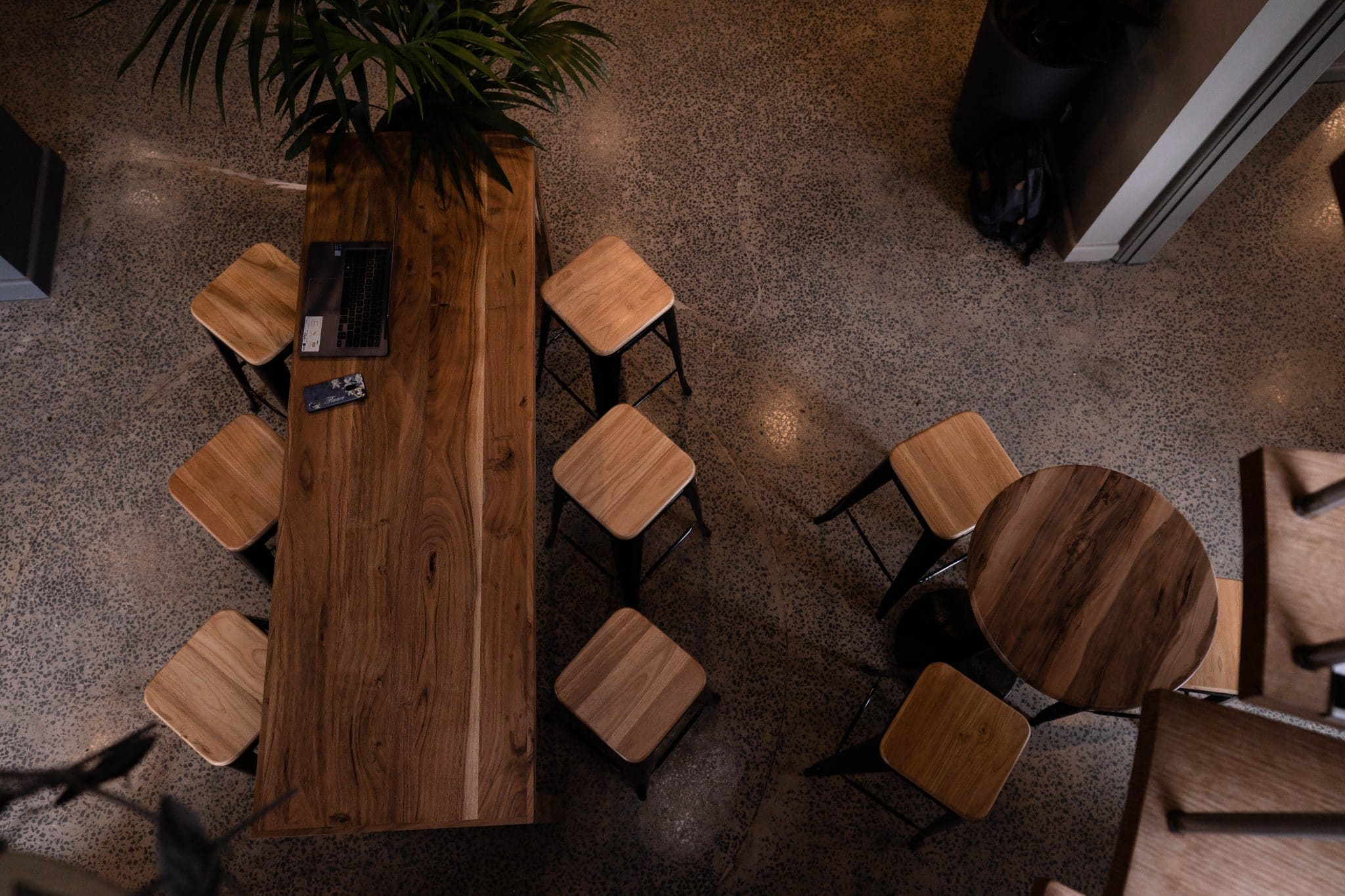
So now this is where we leave you to make your own informed decisions about your bar furniture. We hope you have found this helpful! If you’re having some trouble making this choice and you’d like to see some furniture for yourself, give us a call and speak with one of our consultants today! We’d love to hear from you.
Come and see what high quality bar furniture looks like
Visit one of our showrooms in Melbourne, Perth and Sydney.